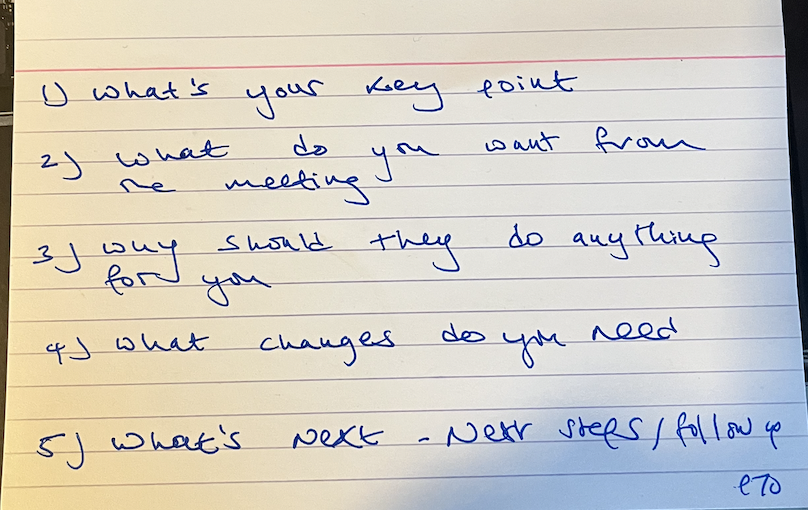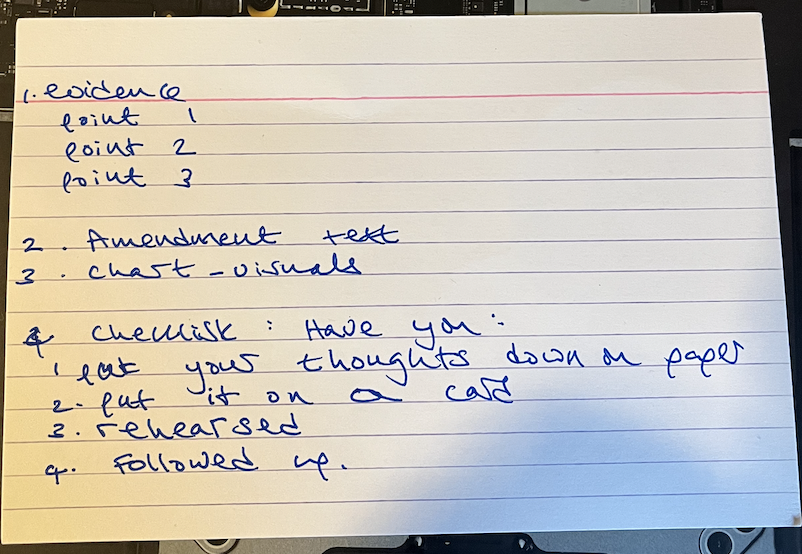The flood of new legislative proposals means many want to meet Member State officials, MEPs and their advisers.
If you want the meeting to be productive – you win their support – here are some simple pointers.
This is drawn on practical experience working as an official, as an adviser for 2 MEPs, and lobbying them.
So before you go into a meeting, you need to be clear about some simple things.
- What is/are the key point(s) you want to raise? 1-3. key points are ideal. Above five you are crossing the boundaries into cognitive overload. For every point, you’ll have real evidence to support your point.
- What do you want from the meeting? You need to be clear about why you are having a meeting. You are not meeting to talk about your/their favourite colour. You want the official/politician/adviser to act/vote in a certain way. You want their support. You need to be very specific about what you want.
- Work out why they should do something for you. The most useful thing you can do is work out why anyone should take the time and extra effort to do anything to help you. Once you work this out, you can change what you intend to say into words and values that speak to your audience’s interests and values. If you go in and pitch your issue in words and values that speak only to you and your self-interest, the chances that others will exert one joule of energy to help you is small.
- You need to be very specific about what changes/actions are needed. You need to help them and provide, if asked, suggested draft amendment text (with an accompanying explanatory memorandum, evidence, and visuals) or voting recommendations.
- Try and keep the meeting short and to the point, Avoid rambling and going down the rabbit hole of obscure doctrinal issues. Keep the meeting civil and constructive. People will always remember you positively if you turn up early and leave early and give them back some time. Before you leave, agree on what’s next on actions and follow up. And don’t forget to follow up.
A Note Card Approach
And, the nice thing is all you need for a meeting can be summarised on a note card.
Here is my template on a note card.


Make Time for Rehearsal Time.
The most helpful thing you can do before any meeting is rehearsing. If you don’t have people to help you rehearse, record yourself on your iPhone the day before, and iron out the glitches, stammers, and twitches. If you come across as half-crazed, speaking in tongues in Aramaic, you may want to rehearse a few more times. And, yes, I have sat through meetings with people speaking in tongues in ancient languages. It’s not a great way to convey a message when the official, politician, or adviser has no idea what is being said. That happens too often in Brussels.
Visuals
I find visuals tell your story as well, and often better than words alone.
Here is a fish example from Baltic Sea 2020.
[pdf-embedder url=”https://www.aaronmcloughlin.com/wp-content/uploads/2023/01/FFF_infographic-FINAL-27052013.pdf” title=”FFF_infographic FINAL 27052013″]